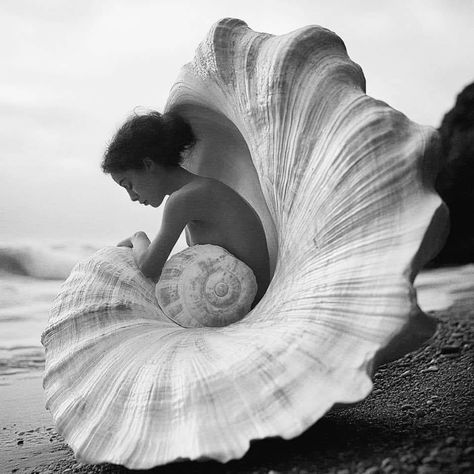
Universe, adorned
Share
The ancient power of jewellery and cosmic order
"Body decoration is a ubiquitous phenomenon that transcends time and space. There is not one civilization, however limited its available materials may be, that does not practice self-ornamentation. As long as our species has existed, the human body has been a focal point of adornment and a versatile medium for our every longing and fantasy."
F. Borel & C. Ghysels, Splendor of Ethnic Jewelry
In the episode “Universe, Adorned: Ornament in Culture, Cosmos, and Consciousness” from The Emerald podcast, host Joshua Schrei delves into the profound significance of human adornment, tracing its roots back over 160,000 years.
Since the dawn of time, humans have adorned themselves, and not just for beauty but for something deeper. A whisper of protection. A claim to power. A conversation with the cosmos.
Adornment as a connection to the Universe
In various traditions, adornment enhanced and patterned consciousness. Wearing specific ornaments, such as a boar-tooth mask or a macaw-feather crown, was believed to unify one's consciousness with the patterns of nature, heighten perception, and offer protection against negative forces. Many pieces of jewellery have been worn as expressions of faith or spirituality, like the Christian cross, the Jewish Star of David or the Egyptian ankh (the hieroglyphic symbol for eternal life).
The word adorn shares its roots with order – suggesting that ornamentation is more than decoration. It is an alignment with the universe’s rhythms.
Jewellery’s ancient spiritual significance
In India, jewellery traditions span over 5,000 years, with early pieces crafted from shells, baked clay and beads. Jewellery-wearing is woven with meaning, especially for brides, whose wedding sets can include a dozen pieces of 24-karat gold. Indian jewellery often symbolises marital status, with the left nostril pierced as a sign of fertility.
The Chinese have also crafted jewellery since ancient times. Buddhist symbols, phoenixes and dragons were the most popular symbols adorning their pieces. The phoenix, a symbol of immortality, was linked to the Empress, while the dragon — representing power and fortune — was reserved for the Emperor. Early jewellery displayed wealth and status; over time, it was admired for its beauty just as much as its symbolism.
Jewellery as a symbol of power and status
Other cultures, too, have valued jewellery deeply.
In ancient Egypt, gold was paramount, and people were often buried with elaborate adornments like the ankh amulet. Greek artisans similarly focused on gold designs, particularly those showcasing elements of nature such as shells, flowers, and scarab beetles.
Interestingly, some jewellery-wearing habits originally stemmed from men, not women. Ear piercing, now more popular for women, was actually more common among men during the Roman Empire, following the example of Julius Caesar.

Following the instinctual need for beautification
So next time you’re putting your grandma’s pearl necklace to bed or drape yourself with emeralds for a date with your love, you’re not alone. Millions of women before you knew the power of stones and precious metals. Cleopatra knew this when she draped herself in lapis lazuli, believing it granted divine insight. Frida Kahlo, crowned in pre-Columbian jade, understood the stories stones could tell. Even Marie Antoinette, in her pearls, was echoing the moon’s quiet glow - a heartless queen reflecting celestial cycles.
Jewellery has always been a language of energy. The weight of a silver chain grounding the body, the pulse of a ruby igniting passion, the soft pull of moonstone tuning one’s spirit to the tides. In Indigenous cultures, feathers, shells and carved bones are worn not just as an ornament but as conduits of wisdom – bringing the human close to the elements, to nature.

The Moon’s adornment
The moon herself adorns the sky in phases, each a different kind of power:
· New Moon: A time for setting intentions, perfect for wearing black onyx or labradorite to invite the unknown with strength.
· Waxing Moon: Growth, momentum: golden citrine or emerald amplifies expansion.
· Full Moon: Manifestation, intuition, time for moonstone, pearl or silver to channel its glow.
· Waning Moon: Release, surrender with smoky quartz and obsidian thar absorb what no longer serves.
To wear jewellery is to attune ourselves to these cycles, to pattern our consciousness as the ancients did. A piece of quartz on the skin, a silver ring on the finger: these are quiet spells, tiny acts of alignment.
In every era, in every culture, we have known: that jewellery is not just an accessory. It is a talisman, a story, a ritual. A way of becoming more ourselves—and, somehow, more connected to everything.
So what do you want to wear today, and why? What secret power hums beneath the metal and stone against your skin?
Perhaps you have always known.

